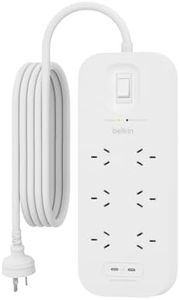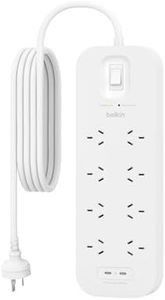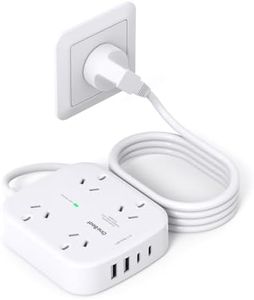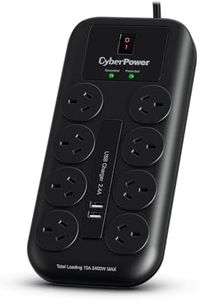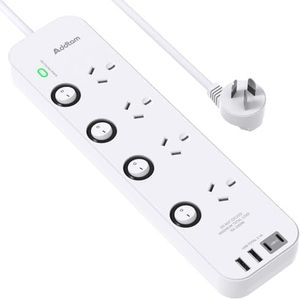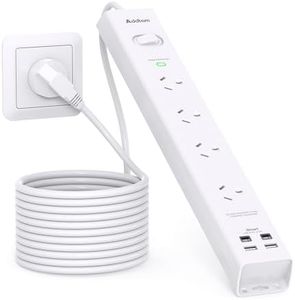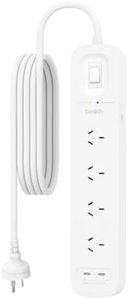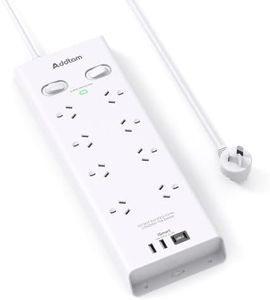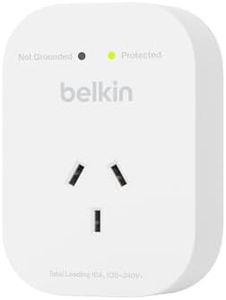We Use CookiesWe use cookies to enhance the security, performance,
functionality and for analytical and promotional activities. By continuing to browse this site you
are agreeing to our privacy policy
10 Best Travel Surge Protectors
From leading brands and best sellers available on the web.Buying Guide for the Best Travel Surge Protectors
When choosing a travel surge protector, it’s important to consider both protection and convenience. Travel surge protectors are designed to keep your electronic devices safe from unexpected voltage spikes, especially in hotels, airports, or places where the electrical infrastructure may not be reliable. Each surge protector comes with a set of features that can match different travel styles – from compact designs for solo travelers to multi-outlet strips for those carrying lots of gadgets. Understanding the key specifications will help you select the right one for your needs.Joule Rating (Surge Protection Capacity)The joule rating indicates how much energy a surge protector can absorb before it might fail. It’s an important measure because higher joule ratings mean better protection for your electronics against power surges. Joule ratings are often grouped into three segments: up to 600 joules (basic protection, suitable for small gadgets), 600-1200 joules (moderate protection, great for most travel electronics), and 1200+ joules (high protection, recommended if you rely on expensive devices or travel internationally). If you travel with just a phone and a laptop, a moderate level is usually enough, but if your gear is costly or sensitive, consider a protector with a higher rating.
Size and WeightSize and weight refer to how compact and portable the surge protector is. This matters because you probably don’t want something bulky taking up valuable luggage space or weighing you down. There are ultra-compact, single-outlet adapters best for solo or minimalist travelers, mid-sized protectors with a few outlets for those carrying multiple devices, and larger strips suited for business or family trips. Match the size to how much you travel and the number of gadgets you typically charge – if you value minimalism, go for the smallest viable option.
Number and Type of OutletsThe number and type of outlets determine how many and what kinds of devices you can plug in at once. Some protectors have only a couple of standard AC outlets, while others include several plus USB ports for charging phones and tablets. For light travelers, one or two AC outlets with a USB port may suffice; if you’re juggling a laptop, camera, phone, and more, opt for models with multiple AC and USB ports. Think about your daily charging routine to pick the configuration that matches your needs.
Plug Type and Voltage CompatibilityPlug type and voltage compatibility are crucial for international travelers. Not all surge protectors work in every country, so check if the device supports dual voltage (100-240V) and comes with adapters for different plug shapes. There are models designed strictly for a single region, universal models with interchangeable plug heads, and some with built-in compatibility for a wide range of voltages. Choose according to your travel destinations – if you stay within one country or region, a specific plug type is fine, but if you travel globally, look for universal compatibility.
Safety CertificationsSafety certifications (like UL, ETL, or CE marks) indicate the surge protector has passed standards for electrical safety. This is important to help ensure that the device won’t malfunction and put you or your electronics at risk. Some protectors have basic certification, some feature advanced safety technologies, and others may lack official safety marks altogether. For the average user, always pick a surge protector with recognized safety certifications to ensure reliable protection.
